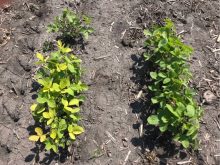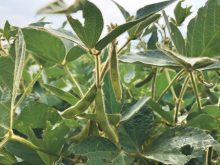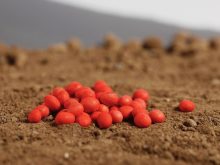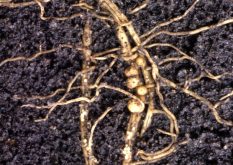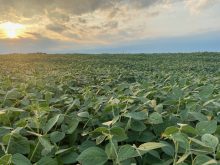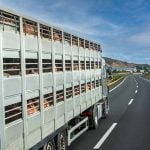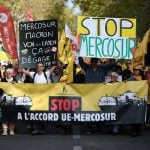At the end of August my wife and I traveled to Brazil for the International Pork and Poultry conference.
I assumed the soybean plants in Brazil grow six-feet tall and that farmers there expect yields close to 80 bushels per acre. I expected to see lush growth, and an insatiable appetite for clear cutting the Amazon rainforest.
Every day, between August 26 and September 4, from sun up to sun down, I was fed information. At the conference, I learned a tremendous amount about how meat moves across the globe. I learned that U.S. birds are mostly sold as parts because most of them are too large for the average oven. I learned that Brazil’s environmental laws are quite stringent. And I heard the word “protectionist” in reference to the EU more times than I can accurately remember.
Read Also

Gentle treatments for pain in the neck
Heading toward year-end, people unknowingly tense up against the cold and busyness, causing neck pain that can often be treated with appropriate support and gentle mobility, athletic therapist Kathlyn Hossack says.
We spent about five days hearing from local experts, politicians, meat industry representatives from all over the world and directors from the World Trade Organization. It was a flood of information.
Market access and trade are a series of hunches and winks wrapped up in a collection of high-level, gratuitously pompous words and bespoke suits. It’s an oversimplification, I know, but it did seem at points that some markets the Brazilians wanted reopened were suspiciously quick to close in the first place.
Not all decisions made in this world are based on reason, but a small part in each of us is eager to suspend disbelief when it comes to the irrationality behind some of the things/people/policies that govern the world.
In the end, it was less about the information than the people we met. We learned about Brazil’s relationship with various markets through chatting with reporters from those countries. I was given context for Brazil’s meat scandal by chatting with Zoe from Switzerland and Oscar from England, both of whom had been covering the industry long before “weak meat” made headlines.
When that portion of our trip ended we flew to Cuiabá, the capital of Mato Grosso, Brazil’s largest soybean producing state.
Mato Grosso
There, we met Christopher Ward, our tour guide. He is a retired farmer who moved to Brazil from New Zealand more than 30 years ago. Together, we covered more than 1,000 kilometres and visited multiple farms and farm groups in Mato Grosso.
Farmers in Brazil are not allowed to grow soybeans on soybeans, and a mandatory three-month soil sanitation period between corn and soys helps limit disease pressure. Their soil is red and for the most part lacks the nutrients needed to grow a crop. Fertilization requirements, combined with crippling insect and disease pressure and high transportation fees, make growing a successful crop in Brazil very expensive.
They make up for slim margins by scaling up and finding opportunities to add on-farm value to their operations. Many of the cotton growers had their own gins or spinning mills and many of the large corn and soybean farmers had additional on-farm storage available for rent. One farm we visited had more than 360,000 metric tons of bin space.
These farmers buy in bulk to drive down price. Some operate upwards of 200 harvesters at one time. They have paved landing strips for personal aircraft, as well as farm-owned crop dusters.
The farmers I spoke with grow short-season soybean varieties and average about 60 bushels per acre. They don’t till and rely heavily on cover crops to help with disease and fertilization.
I learned that the trends happening in agriculture in Canada are also happening elsewhere. I arrived intending to ask them about working together, but they started talking about their collaboration efforts before I had a chance. Commodity associations are finding ways to work together. Aprosoja, the soybean association in Mato Grosso, operates out of a building shared by many other similar groups. This was an intentional move to increase efficiencies and make their voice louder to government.
I will look into an agri-tour guide for my next holiday and I urge all of you to do the same.




